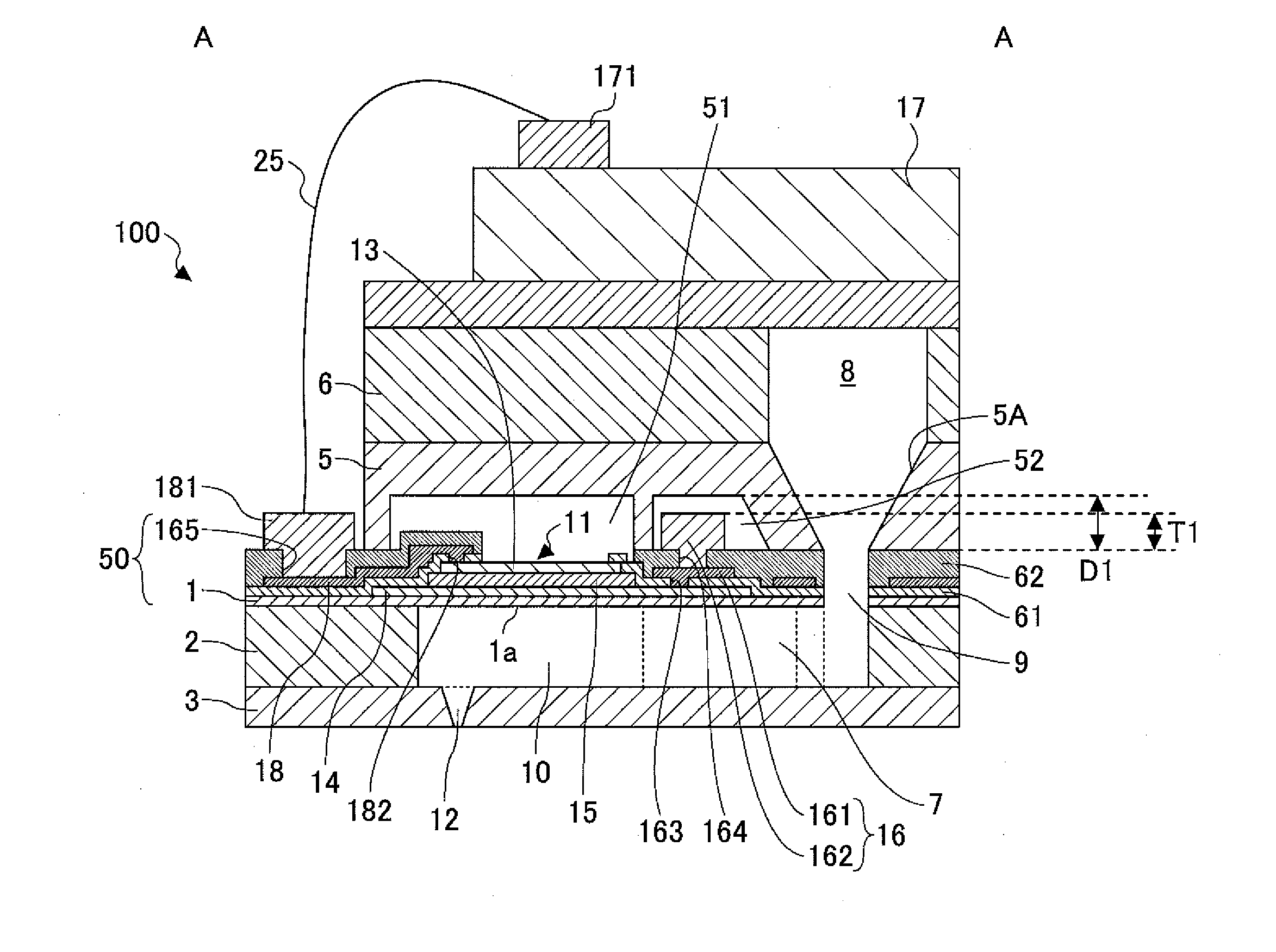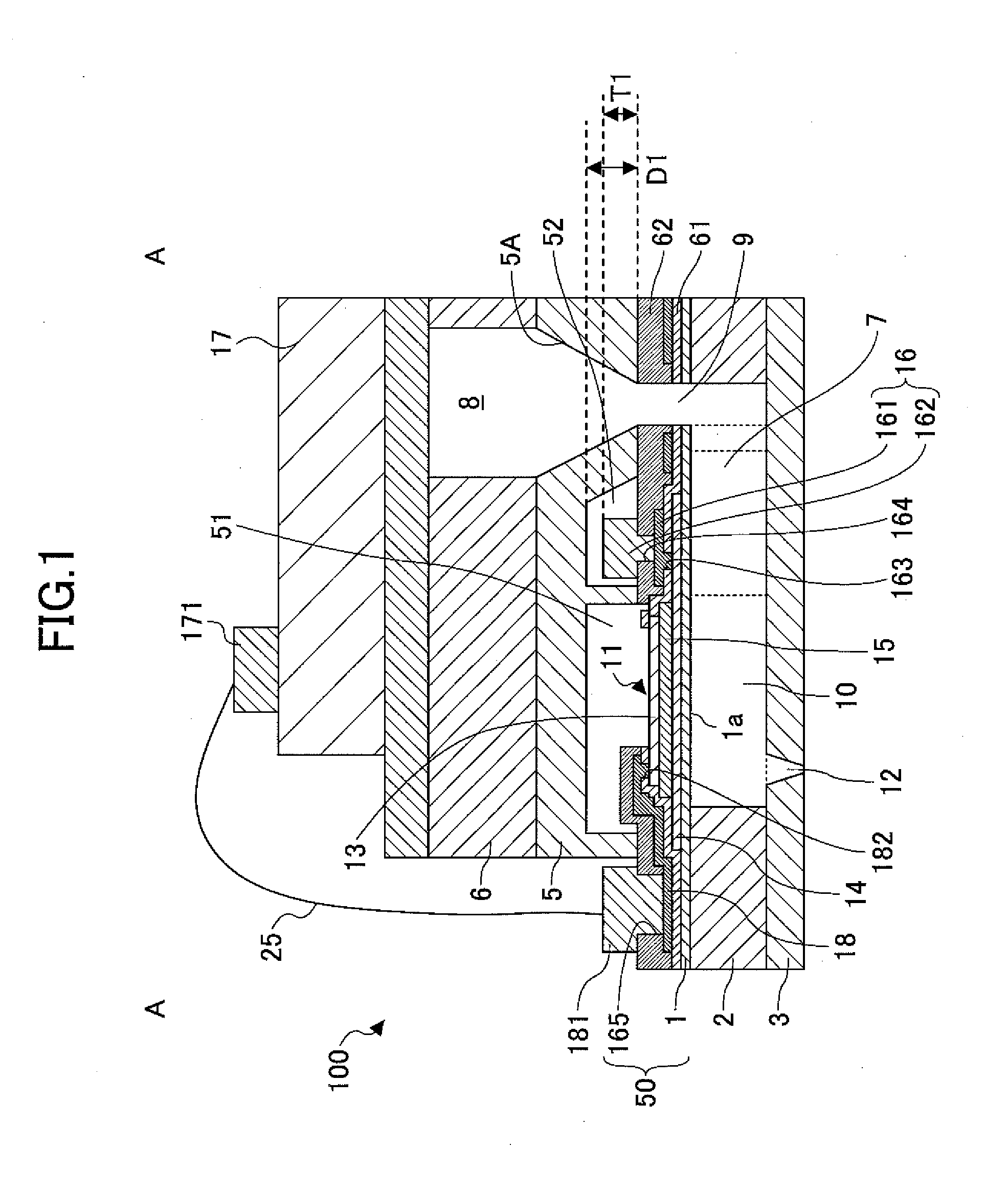Inkjet head
a technology of inkjet and ink chamber, applied in printing and other directions, can solve the problems of difficult formation of thick layers, high density individual ink chambers, voltage drop especially near the center, etc., and achieve the effect of reducing resistance, uniform discharging of ink, and reducing variance in mechanical compliance of ink channels
- Summary
- Abstract
- Description
- Claims
- Application Information
AI Technical Summary
Benefits of technology
Problems solved by technology
Method used
Image
Examples
example 1
Relative Example 1
[0128]In this relative example, an inkjet head was formed in accordance with a similar method as example 1. However, in this relative example, the second common electrode interconnect 162 was not formed.
[0129]Then, the drop speed of the discharged ink was measured by the flash camera similarly as example 1.
[0130]As a result, an average drop speed of the discharged ink of all of the piezoelectric element 11 was lowered to 6.8 m / s. Further, the variance in the drop speed between the piezoelectric element 11 closest to the common electrode pad 191 and the piezoelectric element 11 farthest (for 300 pitch) from the common electrode pad 191 was ±15%. Further, the variance in the drop speed when the adjacent piezoelectric element 11 is actuated became larger (about 10%) than that of example 1.
[0131]It means that the resistance of the common electrode interconnect 16 cannot be lowered enough so that a voltage drop was generated. Further, the function of the vibration layer...
example 2
[0132]In this example, an inkjet head 100 was formed in accordance with a similar method as example 1. However, in this example, the insulating interlayer 62 was formed between the first common electrode interconnect 161 and the second common electrode interconnect 162.
[0133]After patterning the individual electrode interconnects 18 and the first common electrode interconnect 161, Si3N4 (2 μm thickness) was formed as the insulating interlayer 62 by plasma CVD. Then, the contact holes 164 in which contacts for electrically connecting the second common electrode interconnect 162 and the first common electrode interconnect 161 and the contact holes 165 in which contacts for connecting the common electrode pads 191 and the first common electrode interconnect 161, and the individual electrode pads 181 and the individual electrode interconnects 18 are formed were formed in the insulating interlayer 62 by dry-etching.
[0134]Then, by forming a Ni layer (20 μm thickness) on the insulating int...
PUM
 Login to View More
Login to View More Abstract
Description
Claims
Application Information
 Login to View More
Login to View More - R&D
- Intellectual Property
- Life Sciences
- Materials
- Tech Scout
- Unparalleled Data Quality
- Higher Quality Content
- 60% Fewer Hallucinations
Browse by: Latest US Patents, China's latest patents, Technical Efficacy Thesaurus, Application Domain, Technology Topic, Popular Technical Reports.
© 2025 PatSnap. All rights reserved.Legal|Privacy policy|Modern Slavery Act Transparency Statement|Sitemap|About US| Contact US: help@patsnap.com



